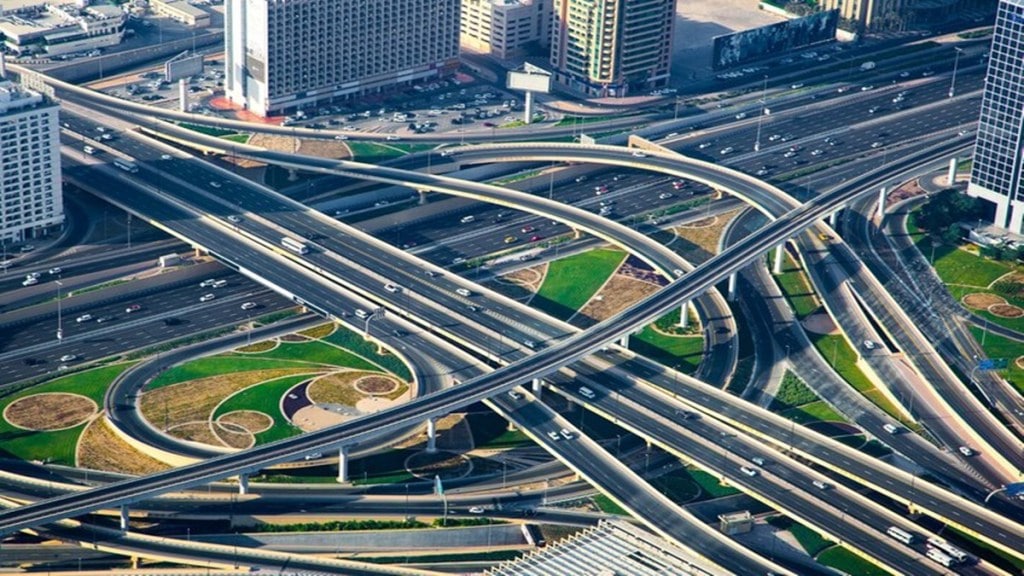By Akhilesh Tilotia
As urbanisation accelerates across India, a striking trend has emerged: once-peripheral roads, originally designed to connect satellite cities, are now vital urban arteries. In many cases, these roads were financed through long-term tolls—typically spanning 25-30 years—to offset the initial construction costs. However, as cities like Delhi and Mumbai have expanded, tolls that once served as funding mechanisms have been phased out, raising a critical question: How to reconcile the interests of urban residents with those of private investors who bankroll such infrastructure projects?
The removal of tolls can ease the financial burden on daily commuters, but it poses a challenge to the economic viability of the roads themselves. Many of these infrastructure projects were designed with tolls as a key revenue stream, and eliminating them undermines the financial assumptions that underpinned their construction. This necessitates a careful recalibration of funding models—one that considers both public convenience and investor expectations.
Several approaches have been tried to mitigate the impact. These include partial toll reductions based on vehicle type—differentiating between commercial and passenger vehicles—or based on emissions, with lower charges for greener vehicles. Globally, such differentiated tolling schemes have been implemented with varying degrees of success. A more fundamental insight, however, lies in the fact that urban expansion has driven up land values around these roads. With this increase in land value, it may be possible to capture some of the economic gains to alleviate the need for tolls without eroding the financial integrity of the infrastructure projects.
Yet, any solution must pass a dual test: fairness to commuters and operational efficiency. While easing toll burdens may be politically appealing, it is crucial that such measures are implemented in a way that preserves the financial sustainability of urban infrastructure.
In some Indian cities, toll collections from passenger vehicles (PVs) are substantial, but in the broader context of state finances, the total amount may be relatively manageable. In an era of electronic toll collection via FasTag, the state government could assume the role of the toll payer, rather than individual commuters. This would allow the state to pay the tolling entity for the vehicles passing through, effectively shifting the financial burden from the public to the state without disrupting the economic calculations that underpinned the original infrastructure financing. This approach is particularly feasible when the tolling agency is under the control of the state government, as it offers a straightforward mechanism for implementation.
One approach to mitigating toll burdens could involve exempting PVs from tolls, as has been done in Mumbai. As noted previously, toll collections from PVs account for only a small fraction of the total toll revenue, despite comprising a much larger share of traffic volume. Commuters are also more likely to voice dissatisfaction with tolls, particularly when waiting times and costs rise, compared to commercial vehicles. To address this, a lump-sum toll tax could be levied at the time of vehicle registration. While this might seem unfair—particularly to those who predominantly use toll-free roads—it could appeal to those who prefer to avoid the hassle of tolls through GPS.
An alternative and politically attractive option would be to exempt green vehicles—those with low emissions—from tolls. With a clear and well-established system for labelling vehicles with green number plates, this exemption would be relatively simple to implement. It could also be a nudge towards green transportation, aligning with national policy objectives to reduce emissions. This concept mirrors policies in other global cities, such as London’s ultra-low emission zones, which incentivise the adoption of greener vehicles by charging higher fees for those with higher emissions.
Infrastructure development, particularly roads, creates significant value in the surrounding land (A Faster Road on the Periphery of a City Sprawl Can Have Immense Value, Pawar and Tilotia, India Infrastructure Review, 2004). As urban sprawl evolves, once-peripheral roads become key internal arteries, increasing the density of development in their vicinity. This densification typically leads to a surge in property values, creating a pool of untapped economic potential that can be harnessed by local or state governments.
To capitalise on this, authorities could adjust “circle rates” or stamp duty levies in the areas surrounding the new or upgraded infrastructure. Alternatively, governments could increase property taxes or sell additional development rights, as improved infrastructure can support higher population densities and increased traffic. These measures would generate additional revenue streams for the city or state, which could be allocated to a fund designed to continue paying tolls to the operating entity without further burdening commuters.
The challenge for policymakers lies in fostering inclusive growth without undermining the financial sustainability of infrastructure development. Creative financial solutions are needed so that cities do not choke on the infrastructure that was meant to help them expand.
The writer is distinguished fellow at The Infravision Foundation and co-founder, Thurro.
Disclaimer: Views expressed are personal and do not reflect the official position or policy of FinancialExpress.com. Reproducing this content without permission is prohibited.

